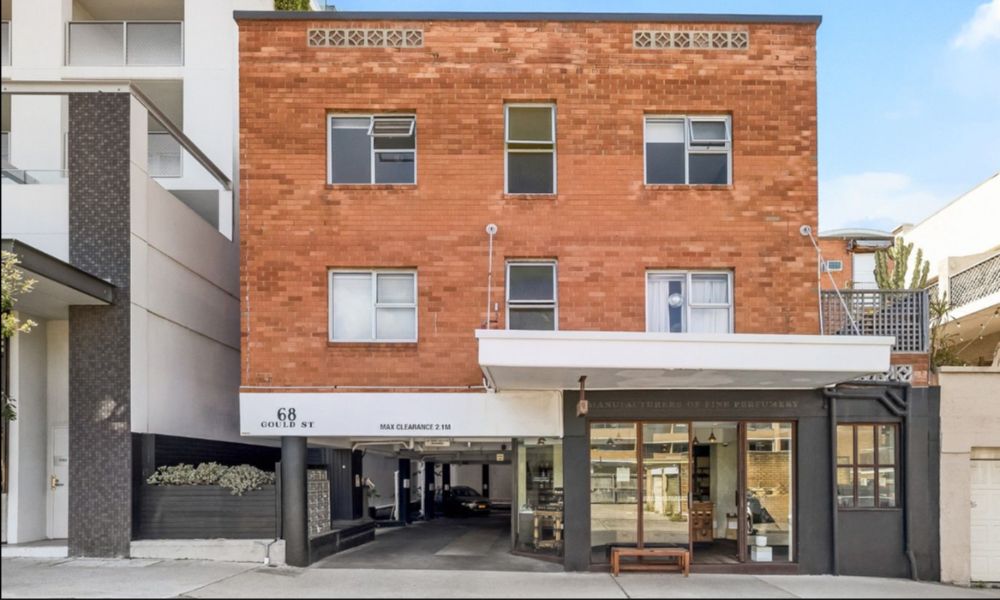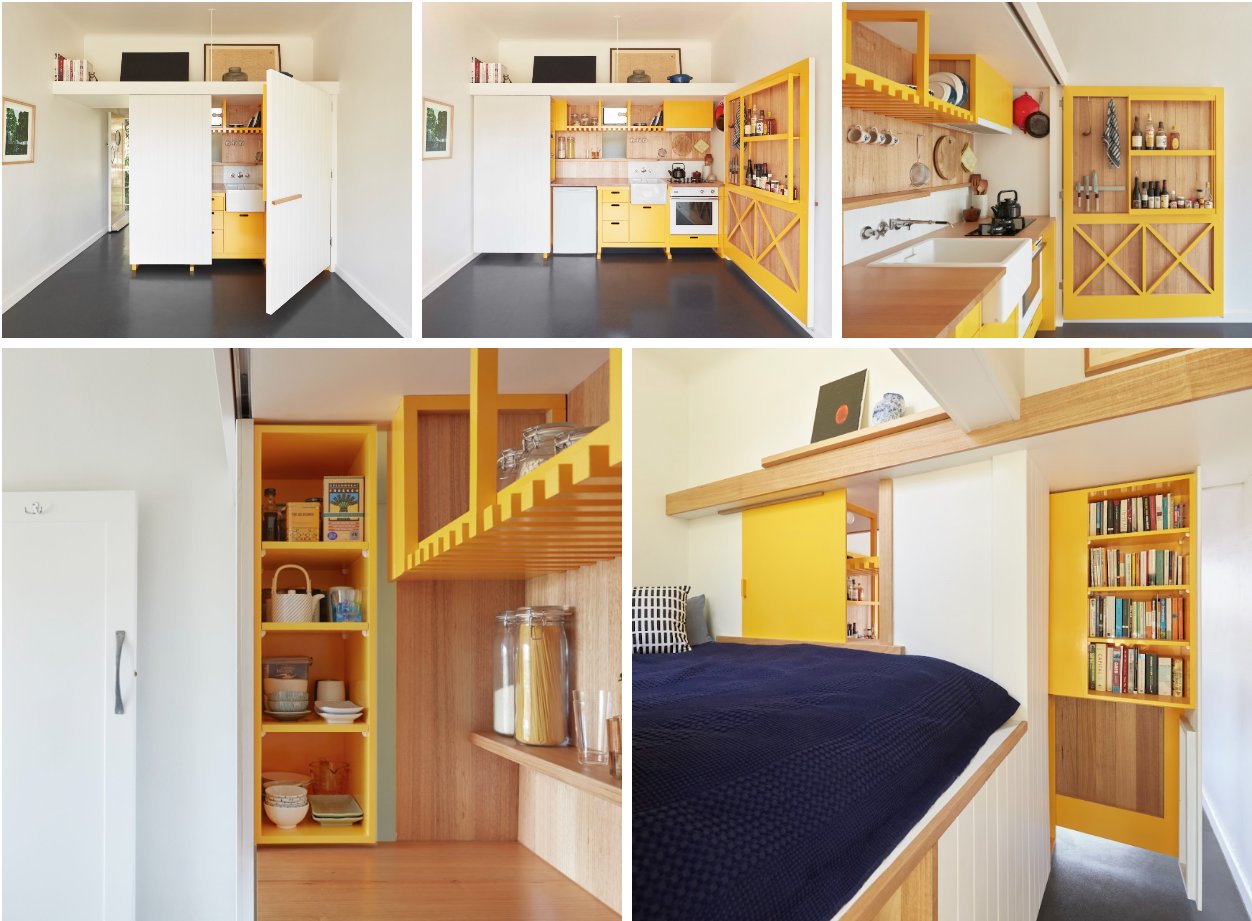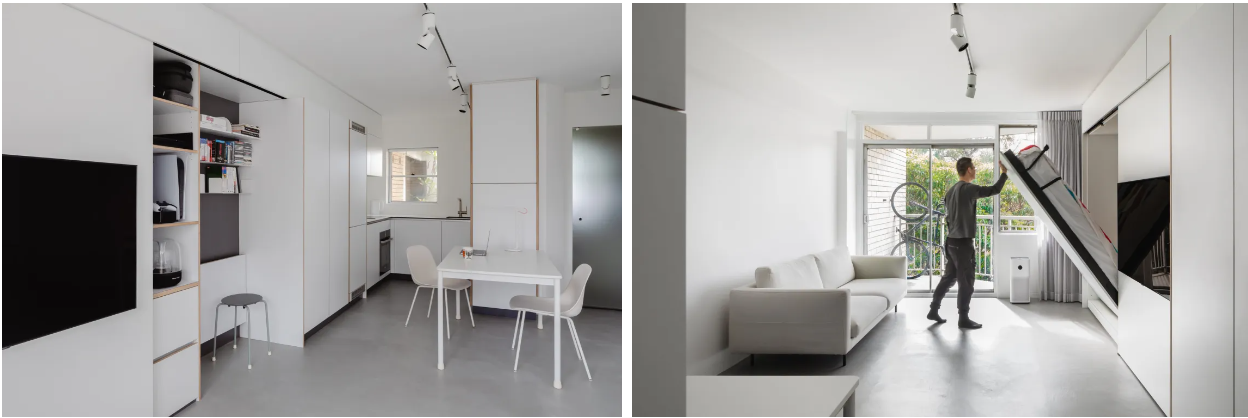

A 17-square-meter apartment in Bondi Beach, Sydney, recently sold for a staggering $511,000, according to Domain.
This tiny space, smaller than the average shipping container, has sparked debates about the future of housing in Australia.
As Australians grapple with the challenge of finding affordable housing, particularly in high-density areas, some experts are asking: Could micro-apartments be the answer to the nation’s chronic housing supply problem?
“At one-third of the size of a standard AFL goal square or half the size of a standard hotel room, it’s seriously tiny,” said Chris Foster-Ramsay (pictured above left), “There’s no way that a lender would entertain taking this property as security for a standard loan.”
“What it does show is that housing affordability and project delivery must be on the government agenda.”
 Photo: Ray White Eastern Beaches
Photo: Ray White Eastern Beaches
While some may be concerned about overcrowding and the lack of privacy, Colin Chee (pictured above right), founder of sustainable living advocacy company Never Too Small, said micro-apartments were already a part of the Australian housing landscape.
“Some of the best examples of Australian micro-apartments (typically apartments with a footprint of less than 30sqm/333sqft) are not found in newly built apartment blocks, but rather, in older refurbished apartment units,” Chee said.
From Melbourne’s iconic 1930s art deco Cairo Flats, designed by Acheson Best Overend with “maximum liveability within a minimum footprint” in mind, to the 27sqm Mark II studio apartment in Sydney that consists of one open space, Chee said what these buildings had in common was “good bones, generous natural light, and covetable locales”.
“In my years of visiting many micro-apartments designed by talented architects and designers worldwide, I can assure you that many of them are much more liveable than poorly designed 50sqm apartments found in some city developments,” Chee said.
“We love to talk about size; hardly anyone talks about design. It’s frustrating, like evaluating the quality of food based on portion size rather than the freshness of the ingredients being served.”

 Pictures supplied by Never Too Small
Pictures supplied by Never Too Small
While design might trump size from a liveability perspective, a major hurdle for micro-apartments is the restrictive policies by lenders.
In the example of the Bondi Beach unit, Foster-Ramsay admitted that he could see the appeal with the studio apartment set only 100m from the iconic Bondi Beach.
“In this case, it’s location, location, location. Given the area, it’ll probably have no problems renting it out,” he said.
However, from a lending standpoint, Foster-Ramsay said the property would run into problems.
“That particular property fails on two credit policy points. Firstly, most lenders won’t touch anything under 35 square meters. I know some that will do slightly less than that such as going to 30 square meters, but the vast majority won’t,” Foster-Ramsay said.
“But in this case, at only 17 square meters it comfortably fails the minimum size test.”
Secondly, the property expert said looking at the photos, there was no separation wall between the kitchen and the sleeping quarters – a condition needed for many lender policies.
“If my client was looking at buying this property, my suggestion to them would be do use equity from an existing property to pay cash and then it would be unencumbered,” Foster-Ramsay said.
“Every situation is different of course, but I would try and get this over the line through cash and avoid having lenders involved.”
While he admits he is no financial expert, Chee said when there’s a demand from the people, banks, in general, “must cater to their needs”.
“Time has evolved rapidly, and the way we perceive our living arrangements is not solely about affordability, although it's a crucial aspect,” Chee said. “Humans have always desired to live in close proximity to each other since the beginning of our existence.”
In Foster-Ramsay’s opinion, it’s “probably not” the time to adjust lender policies around micro-apartments.
“While the small apartment policy is very rigid, it’s also stood the test of time and it doesn’t need to be changed at this point,” he said. “The amount of stock between 17sqm and 35sqm for apartments would be relatively low and I don’t think it’s enough to drive a policy change.”
“We need to increase affordability for properties in places that are connected to amenities, family, education, and work rather than focusing on building micro-apartments.”
However, Chee said this could still be achieved through building sustainable, well developed micro-apartments in well-connected areas.
“It's projected that 70% of us will be living in cities by 2050. Currently, our cities face numerous significant challenges,” Chee said.
According to a presentation by New York architect Vishaan Chakrabarti in 2021, by the year 2100, the world's population is expected to reach almost 11 billion people, an increase of 3 billion from today's numbers.
Chee said to accommodate this growing population, we would need to build an extra 2.4 trillion square feet of new built space.
“To put this into perspective, it's equivalent to adding a new New York City every month for the next 40 years,” Chee said.
“Therefore, it's a matter of time before obtaining a loan for a small home becomes less challenging than it was perhaps a decade ago. As time evolves, businesses that want to survive will also adapt to these changing dynamics.”
What do you think of micro-apartments? Comment below
